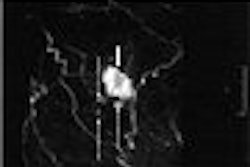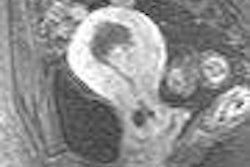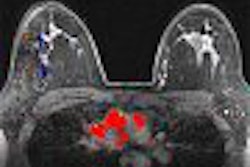SEATTLE - Imaging will be the lynchpin that brings science and healthcare together in the 21st century, according to a presentation Monday at the International Society of Magnetic Resonance in Medicine (ISMRM) meeting. While science makes inroads in genetic decoding and molecular mapping, the focus in healthcare is shifting to disease prediction and prevention.
As a result, imaging will be central to the transformation of biology and medicine in the ensuing years by offering a way to physically track molecular signatures in disease process and target treatment, said Dr. Elias Zerhouni, director of the National Institutes of Health (NIH) in Washington, DC. Zerhouni trained as a diagnostic radiologist and was a key developer of cardiac MRI tagging.
"In the future, medicine will be more predictive, more personalized, and more preemptive. All of these three have been made possible by the recent discoveries that are beginning to transform the practice of medicine," Zerhouni said in the ISMRM Mansfield lecture.
As an example, Zerhouni cited research done at the National Cancer Institute that demonstrated the presence of 16 genes in breast cancer that could be used to predict the likelihood of recurrence.
"This is the kind of example that is going to drive the need for imaging, the need to develop imaging biomarkers that will allow us to intervene earlier than before," he said.
Despite the emergence of different modalities, specialties, and subspecialties, Zerhouni pointed out that the natural history of all radiology has followed a similar course:
- Discovery of a basic physical process (MRI, x-ray, CT, nuclear medicine)
- Using process to display anatomy and structure
- Gaining biological knowledge
- Finding methods to study function
- Progress in other technologies leading to new applications (computer analysis)
- Novel interventions
Right now, one of the limitations of medicine is the challenge of studying complex, interactive biological systems. So the next step in imaging's history will be the development of in vivo cellular and molecular imaging, as well as bio-specific imaging agents, Zerhouni said.
Zerhouni asked ISMRM attendees to look beyond the application of MRI to the human model and start to think of how the modality can be used in more advanced applications:
- Macromolecular assemblies
- Cellular trafficking
- Microsampling for disease characteristics
- Detection of sub-clinical disease
- Image-guided interventions
- Delivery of targeted biological agents
These technologies will be of paramount importance for treating a patient population that is growing older, suffering more from chronic than acute diseases, and contending with noncommunicable diseases (obesity, diabetes) that run amok when there is a disconnect between genetics and environment, he said.
Previous and current methods used to study biological systems have been invasive, qualitative, and one-dimensional, as well as lacking in temporal and spatial resolution. Imaging is in the process of changing that.
"Imaging is nondestructive, quantitative, spatially resolved, temporarily resolved, highly advanced sequences. I can't think of a science that could be more important provided that you shift your definition of imaging," Zerhouni said. "We can no longer look at imaging as a method to produce images. Imaging is the method of extracting information at all physical levels, from single molecules to whole organ systems."
By Shalmali Pal
AuntMinnie.com staff writer
May 9, 2006
Related Reading
Imaging poised to transform the future of medicine, February 2, 2006
Copyright © 2006 AuntMinnie.com



















